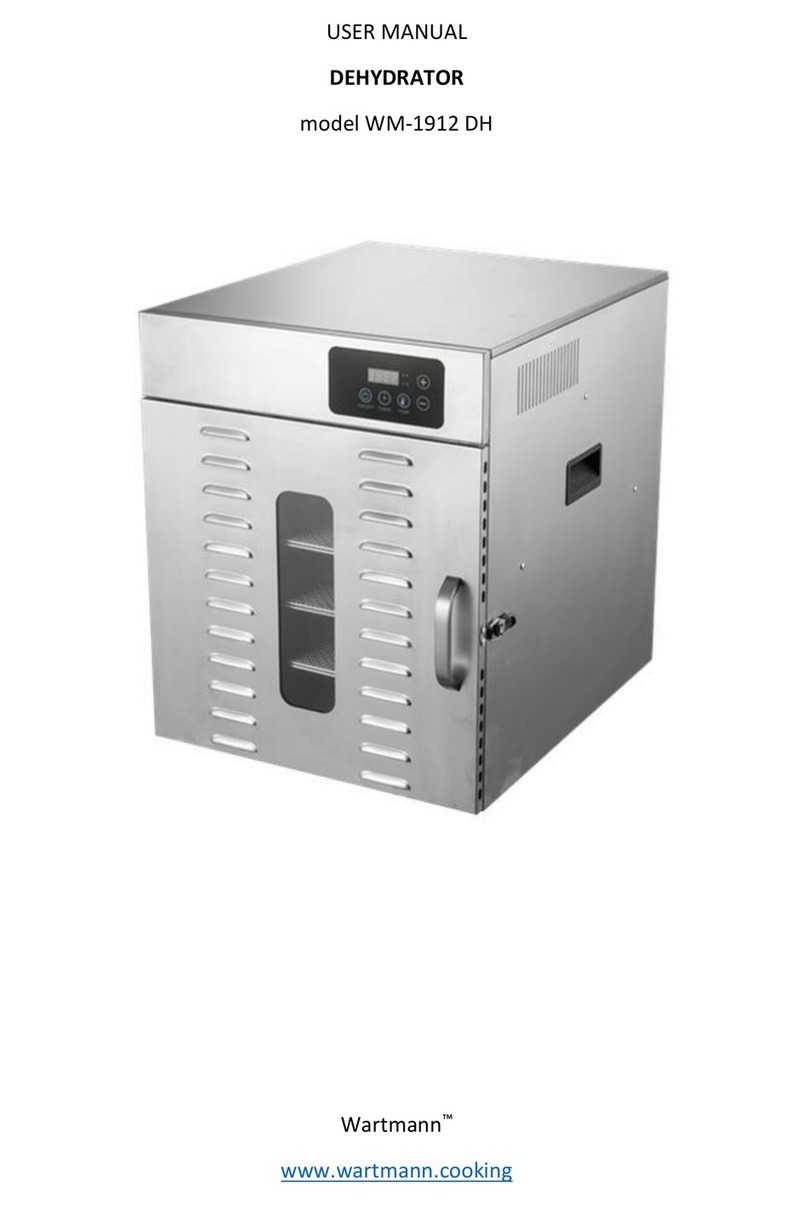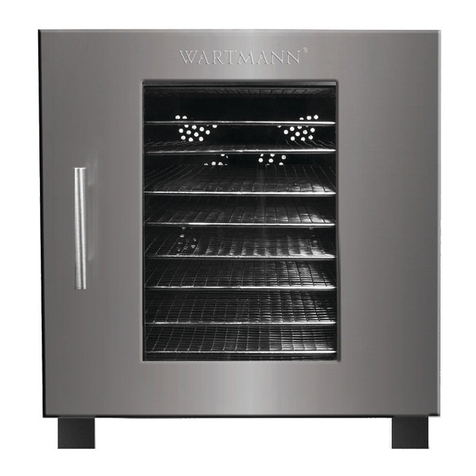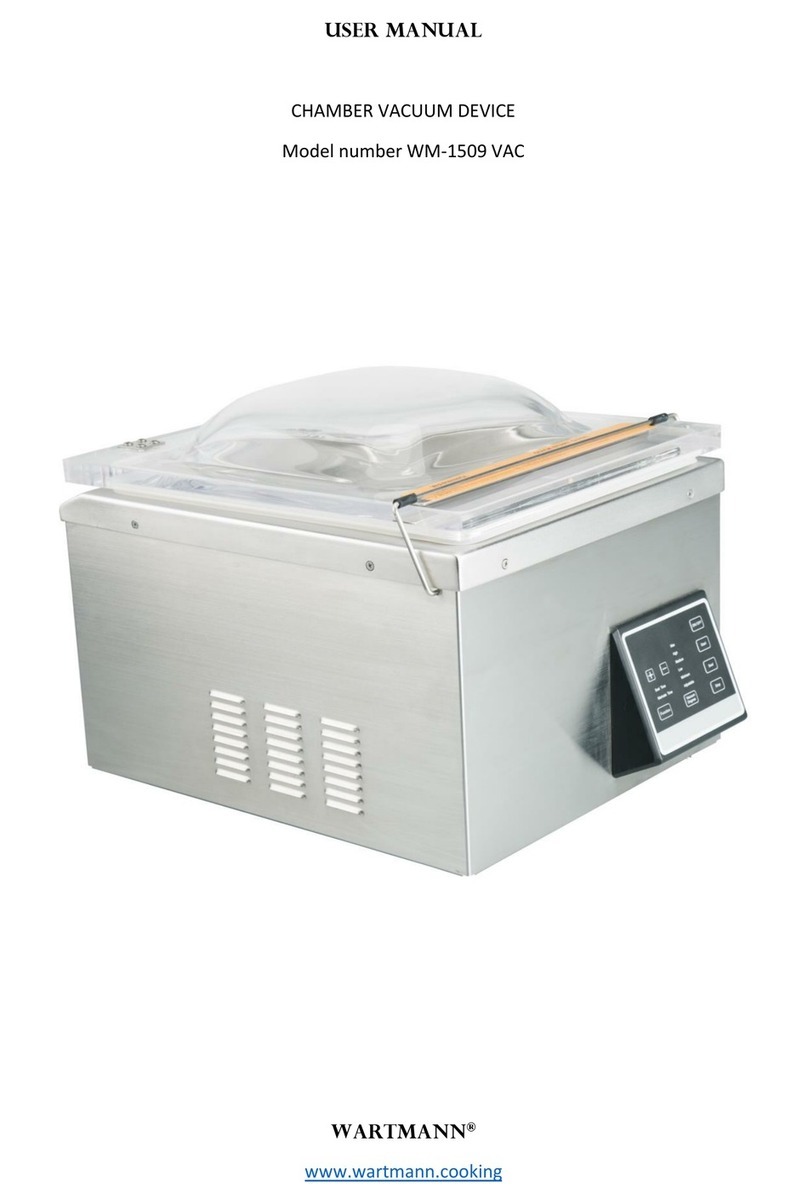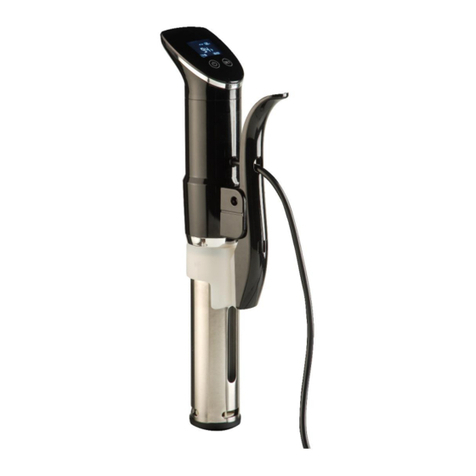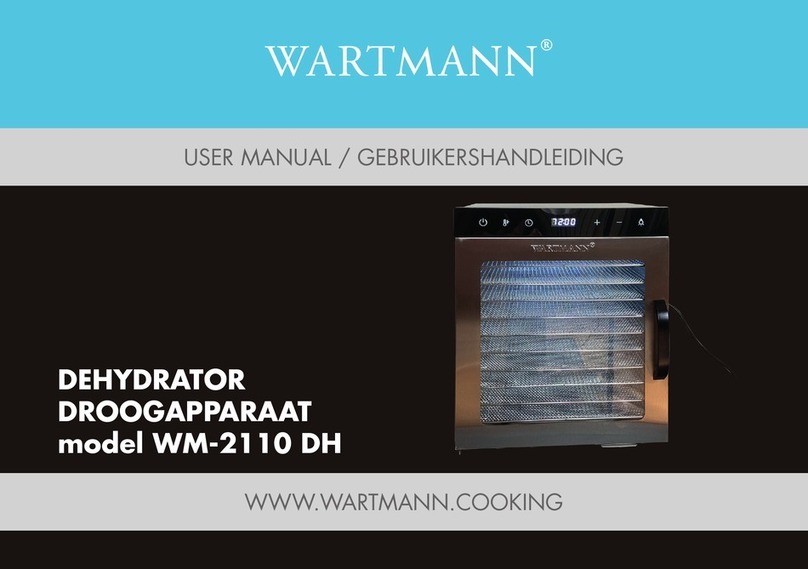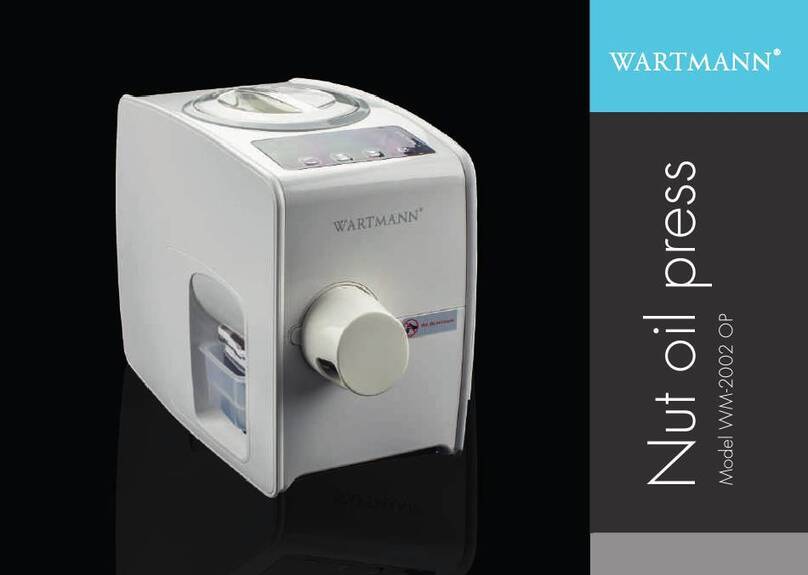
7
Deep-freezing
In order to safely preserve foods, it must be kept at
low temperatures. The growth of micro-organisms is
strongly reduced at temperatures of 4°C and below.
At a temperature of -17°C, growth will nearly come
to a full stop. This does however not kill the micro-
organisms.
If you wish to store your vacuum packed food
long-term, then always place it in the freezer.
Verify
Always check if food is spoiled, before consuming
it. You must realise that vacuum-packaging cannot
undo spoilage. Vacuum-packaging only ensures that
the quality of food is retained longer. How much
longer you can preserve the food, depends on
different factors, such as the quality of the food at
the time of packaging. We advise to only package
fresh food and mention the date of packaging on the
package.
PREPARATIONS
Before you can start vacuum-packaging vegetables,
they need blanching. This will inhibit the
enzymatic activity which causes loss of flavour and
colour fading. Cook the vegetables or place them
in the microwave until they are done, but still a bit
crispy. Subsequently you immerse the vegetables in
cold water, stopping the cooking process. Next, dry
the vegetables with, for instance, a clean towel.
Cruciferous vegetables, such as broccoli, sprouts,
cabbage, cauliflower, kale and turnips produce
carbon dioxide during preservation. Therefore, you
can only store these vegetables in the freezer.
ENGLISH
